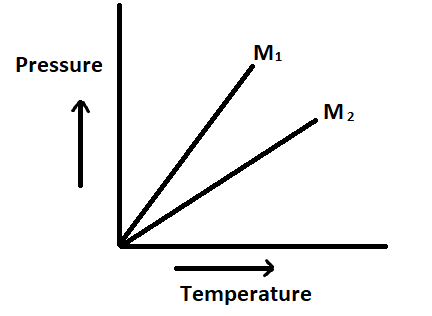
The molar gas constant is the same for all gases because at the same temperature and pressure, equal volumes of gases have the same

A) Number of molecules
B) Average potential energy
C) Ratio of specific heats
D) Density

Answer
557.7k+ views
Hint: We can use the ideal gas equation to find which quantity varies with the variation in volume. We can check how that quantity is dependent on volume, whether directly or inversely proportional. If it’s directly proportional then the variation in both the quantities will be alike and in case of inverse proportionality, the changes in both the quantities are opposite to each other.
Complete step by step answer:
According to the ideal gas equation, we have:
\[PV = nRT\;\] where, n is the number of moles, R is the universal gas constant and T is the temperature.
Number of moles (n) is the number of molecules (N) divided by the Avogadro’s number $\left( {{N_A}} \right)$.

$ \to n = \dfrac{N}{{{N_A}}}$
$ \Rightarrow PV = \dfrac{N}{{{N_A}}}RT$
So, for the value of volume, this can be written as:
$V = \dfrac{N}{{{N_A}}} \times \dfrac{{RT}}{P}$
It is given that the Pressure and temperature are the same for the gas that means they are constant. Every quantity except the number of molecules (N) on the R.H.S of the equation.
$ \Rightarrow V \propto N$
Volume is directly proportional to the number of molecules, with the increase in volume, it will increase and vice – versa.
Thus, for equal volume of gases, the number of molecules will also be equal.
So, the correct answer is “Option A”.
Note:
The question can also be directly answered by the Avogadro’s law:
It is given that the pressure and temperature of the gases are the same. So according to the Avogadro’s law, under same conditions of temperature and pressure the number of molecules are equal for equal volume of gases
Complete step by step answer:
According to the ideal gas equation, we have:
\[PV = nRT\;\] where, n is the number of moles, R is the universal gas constant and T is the temperature.
Number of moles (n) is the number of molecules (N) divided by the Avogadro’s number $\left( {{N_A}} \right)$.

$ \to n = \dfrac{N}{{{N_A}}}$
$ \Rightarrow PV = \dfrac{N}{{{N_A}}}RT$
So, for the value of volume, this can be written as:
$V = \dfrac{N}{{{N_A}}} \times \dfrac{{RT}}{P}$
It is given that the Pressure and temperature are the same for the gas that means they are constant. Every quantity except the number of molecules (N) on the R.H.S of the equation.
$ \Rightarrow V \propto N$
Volume is directly proportional to the number of molecules, with the increase in volume, it will increase and vice – versa.
Thus, for equal volume of gases, the number of molecules will also be equal.
So, the correct answer is “Option A”.
Note:
The question can also be directly answered by the Avogadro’s law:
It is given that the pressure and temperature of the gases are the same. So according to the Avogadro’s law, under same conditions of temperature and pressure the number of molecules are equal for equal volume of gases
Recently Updated Pages
Why are manures considered better than fertilizers class 11 biology CBSE

Find the coordinates of the midpoint of the line segment class 11 maths CBSE

Distinguish between static friction limiting friction class 11 physics CBSE

The Chairman of the constituent Assembly was A Jawaharlal class 11 social science CBSE

The first National Commission on Labour NCL submitted class 11 social science CBSE

Number of all subshell of n + l 7 is A 4 B 5 C 6 D class 11 chemistry CBSE

Trending doubts
Differentiate between an exothermic and an endothermic class 11 chemistry CBSE

10 examples of friction in our daily life

One Metric ton is equal to kg A 10000 B 1000 C 100 class 11 physics CBSE

Difference Between Prokaryotic Cells and Eukaryotic Cells

1 Quintal is equal to a 110 kg b 10 kg c 100kg d 1000 class 11 physics CBSE

State the laws of reflection of light




